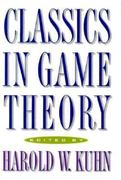Solve the following attachments. This question use complete.
42. In class, we've discussed the fact that the baseline models we've constructed can be extended to incorporate more advanced techniques. Let's look at a specic extension that incorporates the concept of price discrimination. In particular, assume that a rm with constant marginal cost of $2 (and no xed cost) has two types of customers The rst type has a market demand of 01 (p) = 30 p. The second type is more price sensitive and has a market demand of D2 (p) = 30 2p. A. Assume the rm can only set a single price. For instance, when an individual shows up to purchase a good, the rm cannot determine which type of consumer she is. What is the maximal prot the rm can achieve. HINT: This is pretty much a standard market power model where you need to solve for the market demand, prot maximize, then determine if the rm would sell to each customer. B. Now, assume the rm can set a different price in each market. For instance, the rm can offer senior citizen discounts. If the rm prot maximizes in market 1 and also market 2, what prices will be set in each market? C. How much extra prot will the rm receive by price discriminating (i.e., setting a different price in each market)? Use the model of aggregate demand and aggregate supply to illustrate the impact of this change in the interest rate on output and the price level in the short run. LRAS Aggregate Supply Aggregate Demand Aggregate Supply Price Level A LRAS Aggregate Demand Quantity of Output Which of the following will happen when the economy makes the transition from its short-run equilibrium to its long-run equilibrium? (Note: Do not adjust the graphs to reflect the transition to the long run.) Check all that apply. The price level will fall. The demand for money will fall. The equilibrium interest rate will rise. Is this analysis consistent with the proposition that the money supply has real effects in the short run but is neutral in the long run? O Yes O No362 | PART IV Business Cycle Theory: The Economy in the Short Run equilibrium in the market for goods and services and in the market for real money balances. 3. The aggregate demand curve summarizes the results from the IS-LA model by showing equilibrium income at any given price level, The aggre gate demand curve slopes downward because a lower price level increases real money balances, lowers the interest rate, stimulates investment spending and thereby raises equilibrium income. 4. Expansionary fiscal policy-an increase in government purchases or a decrease in taxes-shifts the /S curve to the right. This shift in the IS curve increases the interest rate and income. The increase in income represents a rightward shift in the aggregate demand curve. Similarly, contractionary fiscal policy shifts the 15 curve to the left, lowers the interest rate and income, and shifts the aggregate demand curve to the left. 5. Expansionary monetary policy shifts the LM curve downward. This shift in the LM curve lowers the interest rate and raises income. The increase in income represents a rightward shift of the aggregate demand curve. Similarly contractionary monetary policy shifts the LA/ curve upward, raises the inter- est rate, lowers income, and shifts the aggregate demand curve to the left. CONCEPTS Pigon effect Liquidity trap Debt-deflation theory b. TIONS FOR REVIEW the apppregate demand curve slopes 3. What is the impact of a decrease in the money npact of an increase in taxes on supply on the interest rate, income, consump- lew fr, income, consumption, and tion, and investment? from 4. Describe the possible effects of falling prices on equilibrium income. S AND APPLICATIO LM modelExercise 9.4 (Cont-of-Living Comparison) Suppose you work for an investment rm in New York City. You derive utility from consumption, as described by the utility function U (C), where C denotes consumption and U (.) is an increasing function. Consumption is a composite of food and housing given by camNE. where CF and 0;; denote, respectively, consumption of food and housing. Suppose that in your current job, you mine $250, 000 per year. Your com- pany offers you a oneyear position in its Bolivian branch located in La Paz. Your boss would like to know what would be the minimum income (in dol lars) you would require to be willing to work in La Paz. In NYC the price of food is $50 per unit and the price of housing is $750 per unit. Food is internationally trotted, but housing is nontradable. The dollar/Bolivian peso exchange rate is 5 pesos per dollar. The price of housing in La Paz is 2, 000 pesos. Suppose that all you care about is to marcimize your utility and that you always spend all of your income in consumption (no savings). The answer to this question is just one number, i.e., the minimum income you require to be willing to work for one year in La Poe, but you have to show your work and provide intuition. How many units of food and housing do you consume in NYC and how many would you consume in La Pot with your minimum required income? Provide intuition










